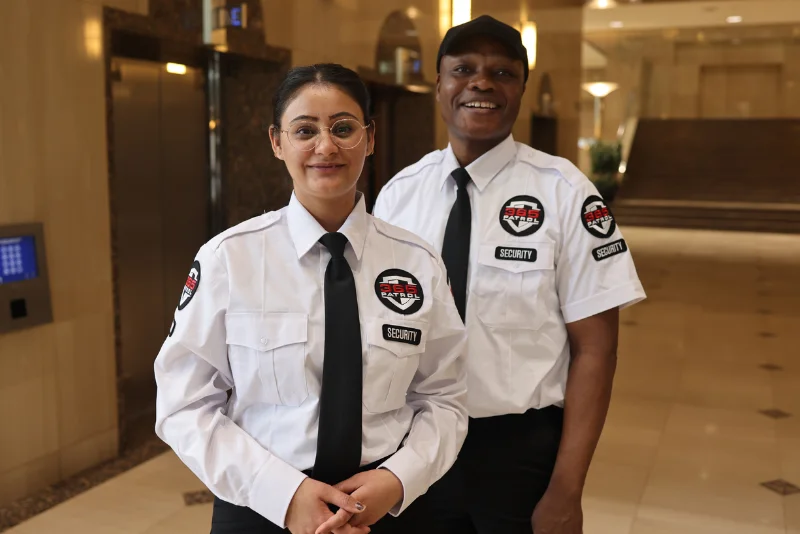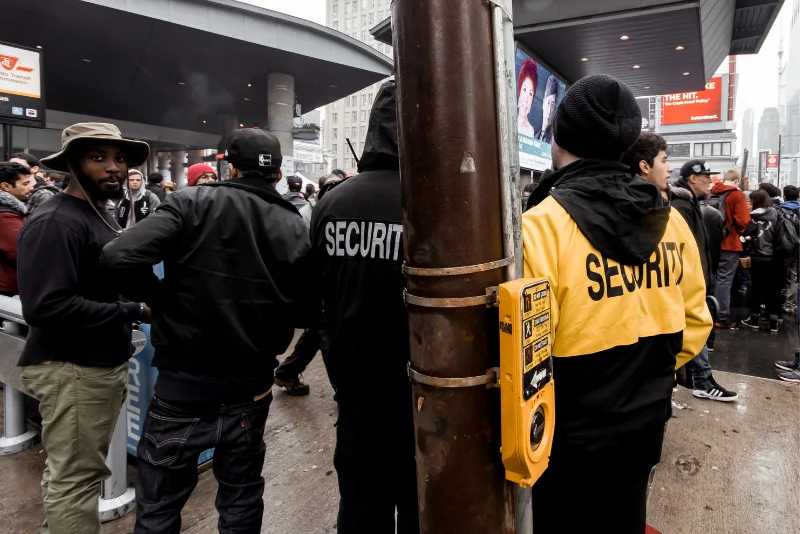There’s a growing emphasis on ensuring your safety while attending sporting events, and understanding the security measures in place is imperative for all fans. In this post, you will discover the top eight steps that venues implement to create a safe environment for you, aiming to enhance your experience while minimizing risks. From entry screening to crowd management, this guide will help you stay informed and feel secure as you cheer on your favourite teams. Learn more about security at sporting events explained below:
Proactive Planning: The Foundation of Safety
Effective safety at sporting events begins with proactive planning that lays the groundwork for all subsequent measures. By establishing comprehensive policies, defining roles, and identifying necessary equipment well in advance, organizations can ensure that they are prepared for any situation. This proactive approach involves collaboration with local law enforcement, emergency services, and venue management to create a unified strategy for maintaining fan safety throughout the event.
Risk Assessment: Identifying Potential Threats
A thorough risk assessment allows you to pinpoint potential threats before they escalate. By examining historical data, current trends, and specific vulnerabilities associated with your venue or event type, you create a clearer picture of what to expect. Engaging with security experts and law enforcement can help identify risks ranging from crowd management issues to possible external threats, enabling you to implement tailored measures to counteract these challenges.
Emergency Response Plans: Preparing for the Unexpected
Crafting robust emergency response plans equips you to handle unforeseen crises effectively. These plans should detail procedures for various scenarios—medical emergencies, crowd disturbances, and natural disasters—ensuring that everyone involved knows how to act swiftly and efficiently. Regular drills and training sessions can reinforce these protocols, making the response seamless and organized.
In-depth emergency response plans play a pivotal role in not only safeguarding attendees but also in maintaining order during chaotic situations. For example, having marked and well-communicated evacuation routes ensures quick dispersal when needed, both for staff and fans. Incorporating communication strategies that utilize loudspeakers, digital signage, and mobile alerts can keep attendees informed and calm during emergencies. Additionally, building rapport with local emergency services and conducting joint training exercises prepares all parties for a coordinated response during any incident.
Advanced Surveillance: Eyes on the Crowd

To maintain a safe environment during sporting events, advanced surveillance technology plays a pivotal role. A comprehensive approach involves not just cameras, but an array of devices monitoring fan behaviour and crowd dynamics. When properly deployed, these technologies can help quickly identify any disturbances or potential threats, ensuring a swift response from security personnel.
- Implementation of high-definition CCTV cameras.
- Integration of thermal imaging for identifying unusual temperature patterns.
- Deployment of drones for aerial surveillance of large crowds.
- Real-time video analysis powered by AI to detect erratic behaviour.
- Coordination with local law enforcement for additional support.
| Technology | Benefit |
| CCTV Cameras | Continuous monitoring |
| Drones | Overhead views to spot crowd issues from above. |
| AI Software | Instant identification of suspicious activity. |
The Role of Technology: Cameras and Drones
Cameras and drones provide unmatched visibility during events, covering extensive areas that ground teams might miss. High-definition cameras can capture real-time video feeds, while drones equipped with advanced imaging technology can survey the crowd from above, identifying any irregularities quickly. This dual-layer of monitoring significantly enhances situational awareness.
Real-Time Monitoring: Coordinated Control Centers
Centralized control centers coordinate real-time responses to any security concerns, creating an efficient system for managing events. Equipped with multiple screens showing feeds from various surveillance cameras, these centers allow security teams to track the crowd dynamics continuously. By utilizing both AI analytics and human oversight, teams can discern threats or potential issues swiftly.
In practice, the effectiveness of a coordinated control center is demonstrated through the integration of communication systems that connect on-ground personnel with the monitoring team. For example, if a camera detects a sudden surge in crowd movement, the control center can alert security teams instantaneously, allowing them to respond before the situation escalates. This proactive approach not only ensures fan safety but also fosters a secure atmosphere, giving attendees peace of mind while enjoying the event.
Trained Personnel: The Backbone of Security

Your safety and security at sporting events significantly rely on the training and expertise of the security team. These professionals are not only the first line of defence but also are equipped with vital skills to manage a variety of situations, from crowd control to emergency response. With specialized training in event and commercial security, they know how to spot potential threats, communicate clearly with fans, and coordinate smoothly with local law enforcement to keep the environment safe and enjoyable for everyone.
Roles and Responsibilities: Defining Security Team Functions
The roles and responsibilities of security personnel are clearly defined to ensure efficiency and effectiveness. Each team member is assigned specific functions, such as monitoring entry points, conducting bag checks, or responding to incidents. By establishing a clear hierarchy and task distribution, the security team can tackle any situation that may arise, allowing you to focus on enjoying the event without concern.
Continuous Education: Ongoing Training for Security Staff
Ongoing training for security staff is important to keep up with the evolving landscape of threats and safety protocols. Frequent workshops and simulations help your security team stay sharp and informed on best practices, new technologies, and current safety trends. This commitment to education not only enhances their skills but also ensures they are prepared to handle any unexpected challenges effectively.
Investing in continuous education for security staff strengthens their ability to swiftly adapt to emerging risks. For instance, many organizations now incorporate annual training sessions that cover various scenarios such as active shooter drills, emergency evacuation procedures, and crowd management techniques. By regularly refreshing their knowledge and skills, your security team can maintain a high standard of readiness, making them better prepared to protect fans like yourself. This proactive approach mitigates potential threats and fosters a safer environment, ultimately enhancing your overall event experience.
Crowd Management: Strategies for Safe Interaction

Implementing effective crowd management strategies enhances safety while ensuring a positive experience for attendees. Utilizing trained staff to monitor crowd dynamics allows for swift responses to emerging situations, thereby reducing the risk of panic. Furthermore, implementing zones can help manage interactions, allowing you to create designated areas for specific activities, reducing congestion and enhancing overall flow within the venue.
Effective Communication: Signage and Announcements
Clear communication through signage and announcements serves a dual purpose: directing attendees and reassuring them about safety measures. Well-placed signs help guide foot traffic and inform attendees of emergency protocols or available services, while frequent announcements keep everyone informed about ongoing events and any changes to procedures. This transparency builds trust and encourages compliance with safety regulations.
Entry and Exit Control: Managing Foot Traffic
Effective entry and exit control maximizes safety by managing the flow of foot traffic in and out of the venue. Designating separate entry and exit points can minimize bottlenecks, preventing overcrowding during peak times. Utilizing barriers or ropes can also direct the movement of guests smoothly, ensuring that everyone can access their seats or facilities efficiently. Employing technology like turnstiles or mobile ticketing can further streamline the entry process, enhancing visitor experience while maintaining security.
Effective entry and exit management begins with strategic planning before the event, where you assess expected attendance and identify potential congestion points. Utilizing crowd monitoring tools can help you anticipate issues and adjust your strategies accordingly, such as deploying additional staffing or opening more gates. Furthermore, having emergency exit routes marked and accessible at all times ensures that everyone can evacuate quickly and safely if necessary. All these measures contribute to a seamless and secure experience, allowing you to focus on enjoying the event.
Collaboration with Law Enforcement: A Unified Approach
A strong partnership with local law enforcement is essential to any successful security at sporting events strategy. This collaboration allows security personnel to respond quickly to incidents, coordinate more effectively, and maintain a secure environment. By working hand in hand, both teams help create a safer, more welcoming atmosphere that gives fans peace of mind and elevates the overall event experience.
Pre-Event Coordination: Joint Operations Planning
Joint operations planning begins well before game day, involving detailed discussions between your security team and law enforcement. This includes assessments of crowd sizes, potential threats, and where additional resources may be needed. Establishing roles and responsibilities early on is crucial to creating a robust security plan that addresses varying scenarios, ensuring a smooth operation during the event.
Real-Time Communication: Establishing Clear Channels
Effective real-time communication between your security team and law enforcement enhances situational awareness and rapid response capabilities. Utilizing dedicated communication devices ensures that all parties are updated on developments as they occur. Regular briefings and debriefings throughout the event also reinforce this connectivity, allowing for adjustments and improvements on the fly.
Utilizing systems like secure radio channels or mobile apps specifically designed for public safety communication can significantly reduce response times to any incidents. For example, agencies often deploy integrated communication platforms that allow instant sharing of crucial information such as crowd dynamics, potential disruptions, or emergency alerts. By implementing these strategies, your event’s safety response can operate like a well-oiled machine, keeping both fans and staff alert and informed. This proactive approach ultimately strengthens the event’s security posture and enhances the overall experience for everyone involved.
Post-Event Analysis: Lessons Learned for Future Events
Evaluating security protocols after an event reveals gaps and successful measures that shape future operations. By analyzing incidents, response times, and attendee behaviour, organizers can develop more effective defences to safeguard fans and enhance their experience. This reflection not only hones security practices but also builds trust with attendees who expect safety as a fundamental right during events.
Feedback Mechanisms: Gathering Insights from Attendees
Collecting feedback from fans offers invaluable insights into their experiences concerning safety and security measures. Surveys, suggestion boxes, and interactive social media platforms allow you to gather direct responses, highlighting concerns and satisfaction levels. Understanding attendee perceptions provides a roadmap for enhancing security initiatives and ensures that the voice of the fan shapes future events.
Adaptive Strategies: Evolving Security Protocols
When it comes to security at sporting events, flexibility in protocols is crucial—especially as threats and crowd dynamics continue to evolve. By analyzing past event data like peak crowd density and incident reports, security teams can fine-tune their approach for each unique venue. Integrating technology such as AI-powered surveillance and mobile apps for real-time communication also plays a major role in anticipating problems and improving response times, ultimately making the entire event experience safer for everyone involved.
Adaptive strategies require ongoing assessment and innovation to remain effective. For instance, implementing advanced crowd management tools like drones or augmented reality can give security teams a comprehensive view of the venue, ensuring rapid intervention if necessary. Collaborative training sessions with local law enforcement foster a quick and coordinated response to potential threats, while frequent drills can prepare your staff to handle emergencies with confidence. The key lies in addressing both current challenges and potential future risks through proactive, data-driven adjustments to your security protocols. By staying ahead of trends and learning from past experiences, you create a safer environment for your attendees.
Summing Security At Sporting Events
Taking this into account, implementing these top 8 steps will significantly enhance your experience at sporting events by ensuring a safe environment for you and your fellow fans. From comprehensive security assessments to effective communication strategies, you can actively contribute to a smoother and more secure event. By understanding these measures, you empower yourself to enjoy the game while prioritizing safety, allowing you to focus on the excitement of the event rather than concerns about security.
